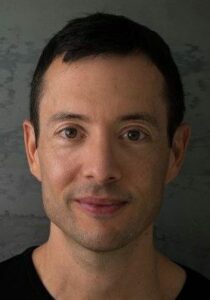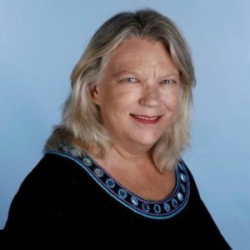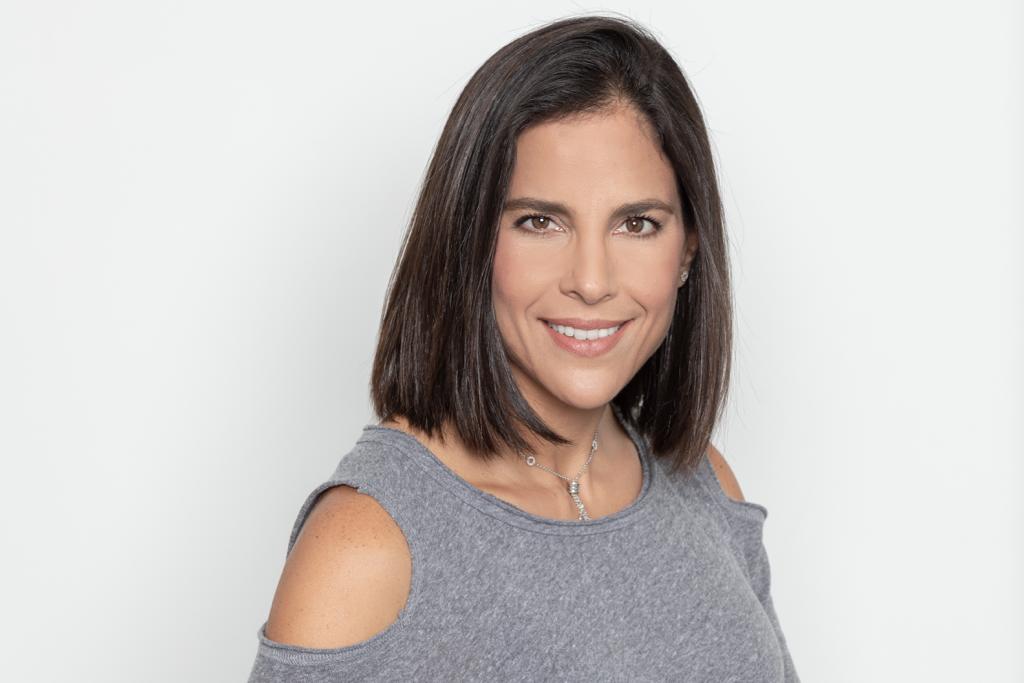“It feels like the whole world is coming on board. It used to be that people said ‘oh yeah, Patty invests in crazy stuff.’ Now we are hearing, tell me about you’re doing” – Patty Wexler, Starlight Ventures
Chicken-free egg whites, DNA-based digital storage, real-time space to earth communications, a digital pill for the mind, a wearable for cows. Caution: It’s easy to go down the rabbit hole on Starlight Ventures’ portfolio page.

Patricia Wexler and Matias Mosse, co-founders and managing directors of Miami-based Starlight Ventures, have been investing in the deep tech, “moonshot” sector since 2017. Their $5 million fund holds nearly three dozen investments to date – and make no mistake, Wexler believes maximum societal return and maximum financial return must go hand in hand.
Good news for Miami, what the mayor is calling the Capital of Capital: A second, bigger Starlight Ventures fund is in the plans. According to an SEC filing this month, Starlight Ventures is aiming to raise a $50 million fund and has raised nearly half of that so far.
We reached out to Wexler to learn more about Starlight Ventures. Here are excerpts of the conversation.
Please tell me a little about your journey up to now.
I was born and raised in Venezuela and graduated there as an engineer. in Venezuela, lived in Mexico and Brazil working in consulting, investment banking, and little bit of the startup world, and then came to the US for [Harvard] Business School. I decided to combine all the best things about what I had done before and joined Disney in LA to work in corporate strategy. I loved that, and then joined Elevation Partners, which was a newly formed $2 billion private equity fund investing at the intersection of consumer and tech. I was there for five years, during which we invested in Facebook, Yelp, Palm and Forbes, among others, then I ran [Elevation founding partner] Roger McNamee’s family office. I moved to Miami and I did it remotely. It was effective because we had already built a relationship.
In 2016, I had an aha moment that I call either an early midlife crisis or the apple fell on my head. I was sitting in Silicon Valley and I thought, there’s too much capital and too much IQ in this zip code and we’re all looking at the same five deals for the same five ideas. This can’t generate the same great returns, this can’t be the most exciting thing for founders, So, long story short, on my quest to figure out what to do next, I was connected to Matias, my partner, who had arrived from Argentina and was a self made entrepreneur who had successfully invested in real estate and had made about 10 angel investments in these transformative technologies and he said “well, I think there’s something here and I’d like to professionalize it.” So we met at just the right time and we talked it through and we said let’s build this. Could we do this from Miami? That was a huge question mark for me and I was prepared to move back to the Valley, if I thought it couldn’t be done. But fast forward, we’re thrilled where we’ve gotten to in Miami. We are building a great firm. We are super excited about the pipeline and our portfolio.
We founded Starlight Ventures in 2017. What we did was we call fund zero the 10 angel investments that my partner rolled into it, and then we made 25 investments together with our own capital in companies all over the world. We don’t have a diversity mandate, but when I look at the numbers in our portfolio, we do have over-represented Hispanics and women and it’s because I feel very comfortable in that world.
Everyone’s moving to Miami now, but you were an early adopter, moving here from Silicon Valley almost a decade ago. So what does it feel like now?
I bucket my experience in three phases. My first phase was I moved here for personal reasons. and my work was all in Silicon Valley and I kind of disguised almost that I was in Miami. I went through a second phase, pre-pandemic, during which I realized Miami is a great place to be based. I was already realizing that for all the platitudes about being outside the bubble and thinking different and being diverse – the reality is, it does make a difference not being all day in Sand Hill with the same kind of people, and it was helping me be a more well-rounded person, and therefore a better investor.
And then phase three is now, which is I’ve suddenly become like a cheerleader — I should probably get a real estate license on the side. I don’t think overnight Miami is going to become the next Silicon Valley, but Miami always felt disproportionately below its reasonable ranking in tech — it underperformed.
Now Miami is taking its rightful place, which should be among the top places in the US to have a tech economy.
I’m feeling really happy that this is a legitimate place to be and that there’s no downside anymore from a professional standpoint to being in Miami.
What do you look for in Starlight investments?
We invest early stage in transformative technologies to fix the world. Basically, we focus on the questions that keep us up at night, humanity’s biggest challenges. We have a company that is doing eggs without the chicken, or more broadly a protein platform without animals (Clara Foods). We have a company that sells a wearable for cows to capture the methane (Zelp). Cow burps account for 5% to 15% of greenhouse gases.
The thing with methane is that in the shorter term it’s infinitely more impactful than CO2. The next 15 years are critical, and so this is a great solution for this transition economy. Zelp has a great business model and founding team.
Our most recent investment is Tynt Technologies, and they are doing smart windows, windows that automatically tint and therefore provide huge energy savings. Everyone wants energy saving so long as it doesn’t cost you money or make your life impossible. Up until now smart windows haven’t taken off because they’re either too expensive or they don’t look as good as regular windows in their natural state. This new technology is a totally radical approach which would solve for both of those, plus can be retrofitted, which is huge.

Inner Cosmos is working on curing depression without medication, and it would be with a teeny implant that you charge, it doesn’t go in your brain, it goes under the skull so it’s only minimally invasive. Up until now brain interfaces have either been you put on a headset and it supposedly works but it’s unclear or you’re inserting something highly invasive like Elon Musk’s Neuralink, and clearly you’re not messing with your brain unless something’s very very wrong with it to begin with. Inner Cosmos’ approach is a tradeoff. It’s early days, but as technology evolves, you could imagine multiple applications For now, just treating depression will be a huge value for society and economic opportunity.
And what do you look for in a founder?
They have to have a really unique expertise that they can bring to make us confident that they can execute. Then interestingly, for that kind of founder, you really need to gain conviction that they know how to build a business, or that can work with teams to get that done because though we are supportive of scientific research and philanthropy, Starlight is investing in large, profitable business opportunities. And so we’re really assessing can you build a business with defensible moats for the long term? Grit and passion are critical for every founder, and I would say in these sectors, maybe even more so, because the time to liquidity can be more than a decade.
These are large and complex markets, often with regulatory and intellectual property constraints. We have one or two companies that are software only but for the most part, they’re what people tend to call deep tech or tough tech. The prizes are bigger if you get there, but it’s a long climb, so those are the critical things we look for.
How much do you typically invest?
Up until now, our sweet spot has been a quarter million, although we’ve done much smaller and much larger deals. Going forward, we’re going to extend that range to add a zero on the first check, so a range of $250K to $2.5 million on first check and we are planning to reserve for follow on. Typically our companies end up raising tens or hundreds of millions of dollars so [until now] we didn’t plan on following on. We now plan to follow-on perhaps one round.
What’s your secret sauce for choosing potential moonshot companies?
It’s a combination of things. One is, even though we’ve only been around since 2017, in our little sub sector, we are among the first to focus on these areas. We’re already well known and get really good access. Our portfolio of founders have actually referred us to a significant amount of our most recent transactions. That’s super helpful because they provide a real endorsement having shared the trenches with them. And we have a great network of advisors which we’ve developed since I joined in 2017. It’s not just finding the advisors and bringing them on board — we have about 10 team advisors — but it’s also knowing how and when to find specialists, and how to interface with them because you can’t go to a nuclear physicist and show them a nuclear fusion company and say, should we invest? You need to understand how to break it down, what to ask, how to interpret the answer and how to contrast it so that’s a skill that we’ve been working on building for years now. Now we have extraordinarily high-quality deal flow. The fact that we’ve positioned ourselves as not exclusively Silicon Valley for the kinds of sectors we invest in has been a huge advantage because we can compare and contrast on each specific topic — what’s getting done in Europe, in Israel, in the Valley, in Boston, in Latin America. And that ends up being super helpful as well.
Tell me a little about your portfolio company Skyloom, which I understand has some Miami ties?
Skyloom is a startup that is working on solving the last-mile problem of space to Earth communications. There’s tons of satellites in space collecting data, but when we bring it down, we still mostly use RF towers, which is a huge bottleneck. For example, Google Maps would get refreshed much more than once every three years. It’s not that the images are not there, there isn’t any economic model to bring it down.
Their solution is to put a geo-satellite in space and use laser technology to increase bandwidth by orders of magnitude. They haven’t even launched the satellite and they’ve already sold nearly half of the capacity, and they’re selling hardware that forms part of the satellite equation because obviously space comms is where the future’s going.
The founders were two guys who came out of the space agency in Argentina, two rocket scientists who had great perseverance, built a great team, and what they needed was the business skills that we could provide. I am the board member who knows about company business and PowerPoints and fundraising, and we provide strategic guidance. One interesting story is that we counseled them to go to Silicon Valley, and they actually went to an accelerator at Berkeley. We felt they needed to be there to build their network to access fundraising — fast forward, now between some Florida Space Agency benefits and that Miami is booming, they’re actually thinking of building their first facility in Miami, which pre-COVID was just not a reality and now it’s become viable. They already had a distributed team because they have engineers in Argentina and they have people in Berkeley, but now Miami could become a core location.

More Starlight in Miami’s future?
We always say we’re not focused on Miami and Latin America but if there were a Starlight type company and we didn’t see and we didn’t back it, we’d be heartbroken. I can’t wait to see more Starlight type companies here. Historically, it’s been a little less deep tech here, but I always say what bigger motivation for climate change than sitting here at ground zero? I want us to solve it. I joke with all my climate friends who mock Miami and I say, “you wait and see.”
Any final thoughts?
It feels like the whole world is coming on board. It used to be that people said ‘oh yeah, Patty invests in crazy stuff.’ Now we are hearing, ‘tell me about you’re doing.’
What was radical 10 years ago is not radical anymore and if you wait 10 years, you will miss out. If you want to be in what we believe are the foundational companies of the new economy, you need to start understanding these trends and technologies now. People investing with us are, first and foremost, looking for great returns, which we hope to deliver. But also there are huge follow on opportunities, and also they want to see the future first. What we’re learning about what’s happening in the future of health or manufacturing or food is relevant for people who have billions to deploy in everything.
It feels good to know that you’re doing good. Decades ago the majority of investors believed you could do good or you could make money, then I think the world evolved to you can invest with some concern for doing good without sacrificing too much return. But what I really have come to understand is the maximum societal return and the maximum financial return actually have to go hand in hand. You have t scale, to both be solving a big challenge, and that takes a company that has barriers to entry and a profitable business model. There is no trade off if you’re really gunning for the tippy top of the companies of the future economy.
I think Miami will bring something really special to the tech world. We are diverse in the truest sense of the word, meaning it’s comprised of people from all walks of life, with different points of view and tech doesn’t define you. Tech and work are a huge part of my life, but not all. Many of the people I hang out with here could care less, and that’s actually a little refreshing,
Follow @ndahlberg on Twitter and email her at [email protected]
READ MORE RECENT INVESTOR COVERAGE ON REFRESH:
Q&A with Laura Gonzalez-Estefani, TheVentureCity
News and Q&A with Ana Paula Gonzalez, SoftBank
News about Melissa Krinzman, Krillion Ventures and Venture Miami
Q&A with Kimberly Marshall, Super Angel and Black Angels Miami
News about David Mullings, Blue Mahoe
Q&A with David Goldberg, Alpaca
Q&A with David Zinn, Ocean Azul
- Tech and politics do mix at 2024 Miami Tech Summit, with eye on the future - April 18, 2024
- #MiamiTech Everything: Seen and heard in April - April 17, 2024
- 8+ things to know in #MiamiTech: Dapta and Siprocal raise funding, plus news from Jeff Bezos, MoonPay, Sustainable Skylines, Freebee & more - April 11, 2024





